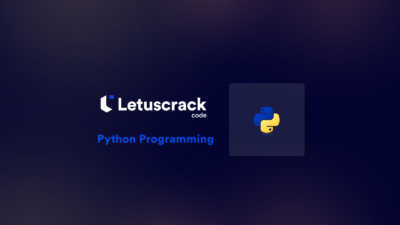A number S is passed as input. Also N positive unique integers are passed as input to the program. One or more numbers (out of these N integers) can be added to form the number S. Several such combinations are possible and the program must print the count C of such combinations.You need to optimize the code so that it executes within the given time (failing which Time exceeded Error will be obtained).
Input Format:
The first line will contain S and N separated by a space.
The second line will contain the value of N positive integers, with the values separated by a space.
Output Format:
The first line will contain the the count C
Boundary Conditions:1 <= S <= 999992 <= N <= 50
Example Input/Output 1:
Input:
10 5
1 2 3 4 5
Output:3
Explanation:
The three combinations which add up to 10 are1 4 52 3 51 2 3 4
Example Input/Output 2:
Input:
140 20
73 50 90 41 81 31 7 16 27 95 58 72 92 3 30 13 2 36 68 59
Output:
98
The 98 combinations that add up to 140 are 50 90 81 59 72 68 73 31 36 50 31 59 41 31 68 41 7 92 41 27 72 13 68 59 73 7 58 2 50 41 13 36 50 81 7 2 50 16 72 2 50 58 30 2 90 41 7 2 90 31 16 3 90 7 16 27 90 7 30 13 41 81 16 2 41 27 13 59 81 7 16 36 81 16 30 13 81 27 30 2 31 7 72 30 7 16 58 59 7 95 2 36 7 58 72 3 7 72 2 59 16 27 95 2 16 58 30 36 16 92 30 2 95 30 13 2 72 30 2 36 73 41 7 16 3 73 31 7 16 13 73 31 7 27 2 73 7 27 3 30 73 16 13 2 36 50 41 31 16 2 50 41 16 3 30 50 31 7 16 36 50 31 16 30 13 50 31 27 30 2 50 7 13 2 68 50 16 58 3 13 50 16 13 2 59 50 27 58 3 2 50 72 3 13 2 90 7 27 3 13 41 81 3 13 2 41 31 7 58 3 41 31 7 2 59 41 31 30 2 36 41 7 3 30 59 41 16 13 2 68 41 58 3 2 36 81 7 3 13 36 81 16 27 3 13 31 7 16 27 59 31 7 27 72 3 31 7 30 13 59 31 16 27 30 36 31 58 13 2 36 31 3 2 36 68 7 16 13 36 68 7 27 2 36 68 7 58 3 13 59 7 92 3 2 36 16 27 58 3 36 16 27 92 3 2 16 27 2 36 59 16 72 3 13 36 27 95 3 13 2 27 72 3 2 36 27 30 13 2 68 58 3 30 13 36 92 3 30 13 2 30 13 2 36 59 50 41 31 3 13 2 50 41 7 27 13 2 50 31 7 3 13 36 50 31 16 27 3 13 41 31 16 3 13 36 41 31 27 3 2 36 41 7 16 27 13 36 81 31 7 16 3 2 31 7 27 3 13 59 31 16 58 3 30 2 31 27 3 30 13 36 7 16 27 58 30 2 7 16 72 30 13 2 27 3 13 2 36 59 41 31 7 16 30 13 2 41 7 16 58 3 13 2 31 7 16 3 13 2 68 7 16 27 72 3 13 2 7 27 58 3 30 13 2 41 31 7 16 27 3 13 2
#include<stdio.h>
#include<string.h>
short int subset[999][999],cnt=0;
void print_subset_count(int a[],int i,int sum){
// this funtion count the number of subset present
if(sum==0 && i==0){
cnt++;
return;
}
if(sum!=0 && i==0 && subset[0][sum]){
cnt++;
return;
}
if(subset[i-1][sum]){
print_subset_count(a,i-1,sum);
}
if(sum>=a[i] && subset[i-1][sum-a[i]]){
print_subset_count(a,i-1,sum-a[i]);
}
}
void build_table(int a[],int n,int sum){
int i,j;
memset(&subset,0,sizeof(n*(sum+1)));
for(i=0;i<n;i++){
subset[i][0]=1;
}
//check if a[0] is less than sum then set true for the choice
if(a[0]<=sum)
subset[0][a[0]]=1;
/*
* fill the table using the formula
*
* current = above value (i-1)(j) (or) value (i-1)(j-a[i])
*
* value(i-1)(j-a[i]) if the sum can be formed using 0..j subset
*
* */
for(i=1;i<n;i++){
for(j=0;j<sum+1;j++){
subset[i][j]=subset[i-1][j]||subset[i-1][j-a[i]];
}
}
//print the subset table
for(i=0;i<n;i++){
for(j=0;j<sum+1;j++){
printf("%d ",subset[i][j]);
}
printf("n");
}
//important check whether the subset is present or not
if(subset[n-1][sum]==0){
printf("there are no subsets %d %d",n-1,sum);
return;
}
//cool we completed table then we need to find the subset
//this is done using recursion procedure
//traversing from subset[i-1][sum]
// two ways we can get subset
// a) including elements eg: sum=10 list=1,2,3 include 4
// b) excluding elements eg: sum=10 list=1,2,4,5 exclude 2
// let's do it
print_subset_count(a,n-1,sum);
}
int main(){
//int a[]={73,50,90,41,81,31,7,16,27,95,58,72,92,3,30,13,2,36,68,59};
//int n=20,sum=140;
long int sum;
int n,i;
scanf("%ld",&sum);
scanf("%d",&n);
int a[n];
for(i=0;i<n;i++)
scanf("%d",&a[i]);
build_table(a,n,sum);
printf("%d",cnt);
return 0;
}

